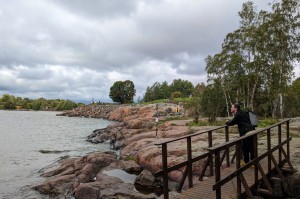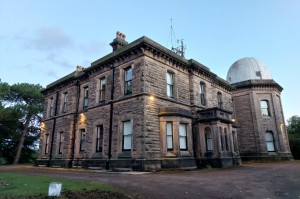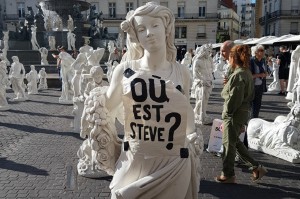Field Trip: Gujarat, ‘The Jewel Of The West’, India
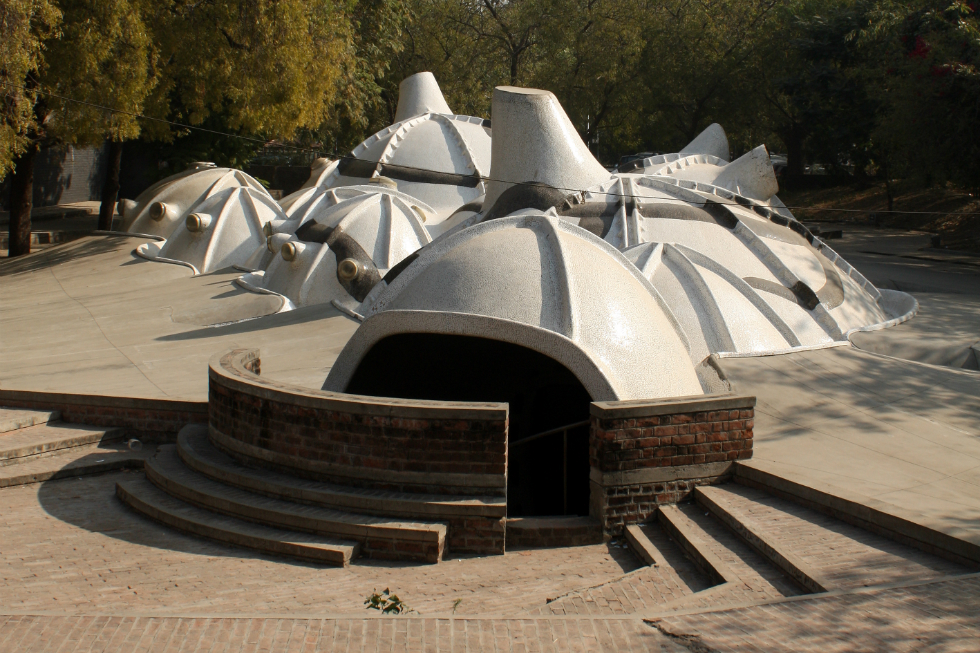
Turner Prize nominees, graffiti and Gandhi: Emma Sumner finds this and more as she continues her introductory guide to the art spaces of India, this time stopping off at the so-called ‘Jewel of the West’…
The city of Ahmedabad in India’s western state of Gujarat is famously known to be the city where Mahatma Gandhi centred his struggle for India’s freedom. Now India’s sixth largest city, Ahmedabad has grown to become a vibrant commercial hub with an exciting cultural offer.
However, as host to the National Institute of Design (NID), Ahmedabad is perceived to be a city of design excellence rather than of artistic merit; neighbouring city Baroda (also known Vadodara), as home to the Maharaja Sayajirao University School of Fine Art (MSU), is more commonly associated with the arts. I visited both. Hearing that Gujarat has the highest number of cultural venues in India — leading to the moniker ’Jewel of the West’ – I was assured that those who take the time to explore will be rewarded with one-of-a-kind spaces and unique creative projects.
Often missed off the majority of traveller’s hit lists, those who do venture to Ahmedabad are often enticed by the opportunity to visit Gandhi’s Sabarmati Ashram. Born in Porbandar, on Gujarat’s western coast, Gandhi favoured Ahmedabad as the centre of hand-loom weaving which made it the perfect location for him to revive hand-spinning. Today, the Ashram remains a serene and calm hub of reflection with a museum and gallery, allowing visitors to explore Gandhi’s legacy and the work of artists exploring this great man’s life.
Ahmedabad’s historical roots are firmly planted in the manufacture of textiles, as I discovered at The Calico Museum of Textiles. Regarded as one of the most important textile museums in the world, it showcases a collection of rare handicraft spanning five centuries. Given the delicate nature of this important collection, access is only granted on pre-booked tours guided by a highly enthusiastic and passionate tour guide and under the scrutiny of several museum staff.
Back to the National Institute of Design (NID) which has produced some of the country’s top makers. Equipped with 3D printers to ancient jacquard looms, the dedicated campus provides students the opportunity to develop any innovative and exploratory design their creative minds desire. I enjoyed the school’s on-site NIDUS design shop, which stocks exemplary ceramics, textiles, publications and design accessories produced by NID’s alumni, current students and faculty members.
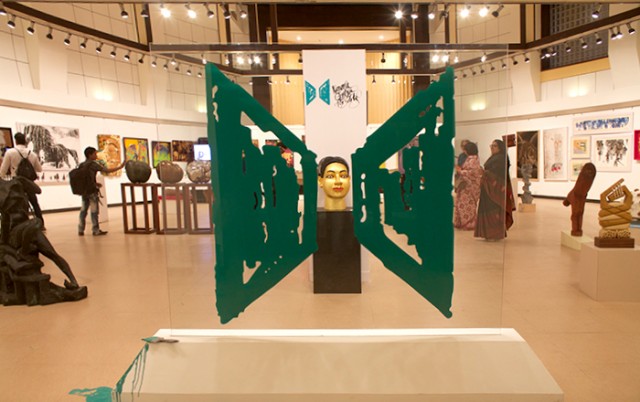
Just across the road, Ahmedabad’s City Museum (Sanskar Kendra) invites visitors to meander through more traditional displays. Documenting the city’s rich textile history, alongside the story of its architecture, historic events, industry and local communities, it’s worth a visit just to see how all these elements have intertwined to create the vibrant city seen today.
About a 10 miunte walk up town, you’ll find Kanoria Centre for Arts (KCA, pictured, above). Established by philanthropist Urmila Kanoria in 1984, Kanoria wanted to create a welcoming and supportive centre for creativity which would foster art and social development. With fully equipped studios, a library, workshop spaces and professional art gallery, KCA has become a nurturing environment, supporting recent creative graduates through its artist residency programme, as well as providing space for creative professionals to further develop their practice in a calm environment. A self-funded institution affiliated with Christie’s-Mumbai and numerous other international organisations, KCA is a much needed space.
Another short walk from KCA are the smooth mosaic curves of the Ahmedabad ni Gufa (Gujarati for cave, main image), which was created through an intriguing collaboration between two of India’s greats: architect Balkrishna Vithaldas Doshi and artist Maqbool Fida Husain. Designed to combat Ahmedabad’s severe summer heat, the result was the magnificent sunken ‘blobitecture’– constructed by Doshi to house Husain’s work. A unique fusion of architecture and art, it has become one of Ahmedabad’s — and now one of my — most loved spaces.
Travelling around the west bank, it’s hard not to notice the overwhelming amount of street art. All legitimate, the local government commissioned these murals to be painted by a number of the city’s creative students. One of the most striking examples of street art is the Delhi Street Art group’s enormous mural on one of the city’s main flyovers. I tracked down Yogesh Saini, the group’s coordinator, and he explained:
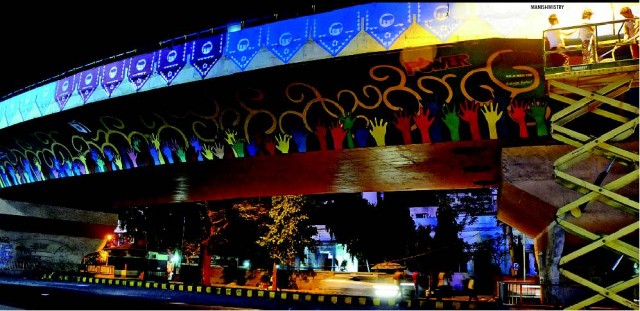
“On my first visit to Ahmedabad, I was struck by the fact that a lot of street art already exists in the city, albeit smaller panels along the city walls. Never before had the city witnessed art on the scale of a complete flyover [pictured, above] being turned into a giant canvas, and its central location with busy traffic made it quite a challenge… All of the work had to happen 20 metres or higher from ground level on rickety scaffolding and using makeshift lift equipment; maybe that’s one of the reasons it had not been attempted earlier.”
A colourful concoction of historical figures and meaningful motifs, the mural is a fantastic representation of the group’s work outside their home city.
Onwards. Leaving Ahmedabad, a three-hour train journey will take you to the city of Baroda/Vadodara. A cultural and educational hub boarded by the Mahi River and closer to the coast, the city is home to several nationally important institutions, including the aforementioned Maharaja Sayajirao University School of Fine Art (MSU). The school encourages the making of work which pushes the formal boundaries of art, and its alumni include Nasreen Mohamedi and 2010 Turner Prize nominee Dexter Dalwood (pictured, below). Now an internationally recognised institution, the school has links to London’s Royal College of Art where numerous faculty members undertake annual scholarships.
“The city of Vadodara has a deep bond with the fine arts”, said Head of Applied Arts Kashyap Parikh on meeting me at the school. “Since its inception in 1949, The Faculty of Fine Art has offered various professional courses in the creative field … [and] … has grown into a nursery of art that encourages experimentation.”
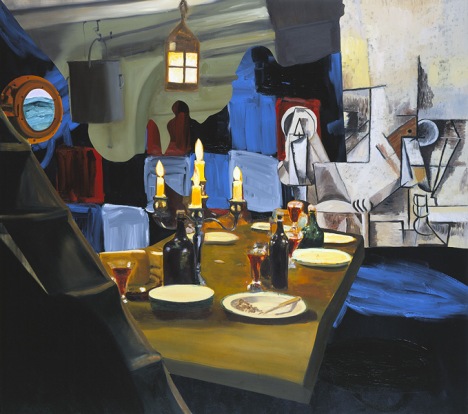
Baroda’s strong bond with the arts is clearly reflected in its City Museum and Art Gallery’s displays, which range from collections of stuffed birds to exquisite 15th century European paintings. However, the city’s crowning glory is The Maharaja Fateh Singh Museum, which houses European art works collected by the Maharaja Sir Sayajirao Gaekwad III on his trips out of India. I saw notable works by Raphael, Titian and Rembrandt, in addition to important works by many Indian artists, including a vast number of 19th century Indian portraits by Raja Ravi Verma, of whom the Maharaja was an avid supporter.
A destination dismissed by travellers as they head south to Mumbai or north to Rajasthan, the state of Gujarat has a lot more to offer the cultural tourist than many may at first think. Visiting two culturally diverse cities, both hosting institutions dedicated to nurturing tomorrow’s creative talent, I found out that Ahmedabad and Baroda allow space for experimentation and development.
For the first-time visitor, it is a challenge to uncover either city’s covert art scene, but those who do will be rewarded with the opportunity to gorge themselves on a cultural medley of stimulating places, spaces and people.
Emma Sumner
Sardar Vallabhbhai Patel International Airport, Ahmedabad, is connected to major Indian cities — including Delhi, Mumbai, Calcutta and Chennai — by daily services, and connects to countries worldwide. It is located 8 km from the Ahmedabad Railway Station
See the Gujarat website for tourist information and an extensive list of museums, palaces and temples



